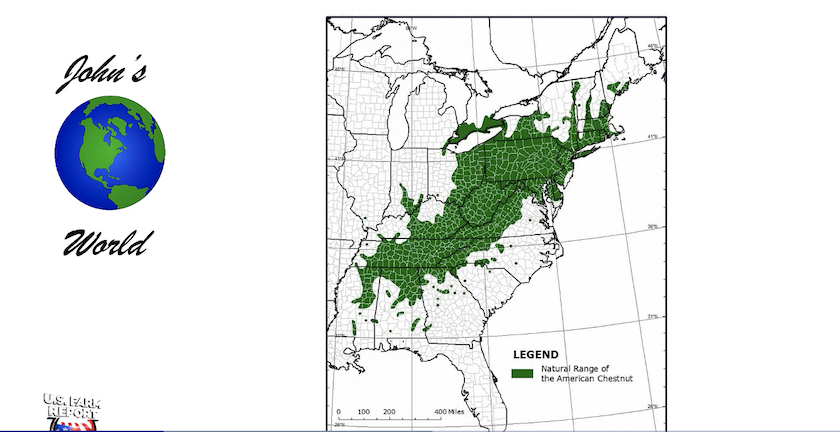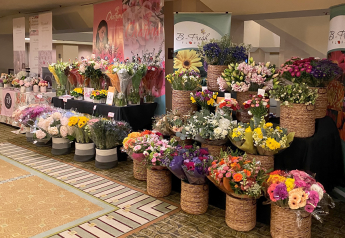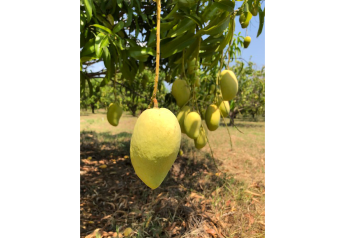John Phipps: Why More Americans Don't Actually Roast Chestnuts On an Open Fire
USFR-John's World Christmas 2022
One of the most durable of all standard Christmas songs played nonstop during this time of year is “The Christmas Song”. If that unimaginative title doesn’t ring any silver bells, that’s because it is more recognizable by the first line, “Chestnuts roasting on an open fire”. Even for nostalgia buffs, though, the reference to chestnuts, let alone roasted ones, will trigger few remembrances.
Chestnut trees once dominated Eastern forests comprising as much as half the hardwood in those woodlands. As you can see, they grew to enormous size, and chestnut lumber was a prized material for all kinds of applications, but especially large beams and planks for flooring for brans and general construction.
In 1905 a fungus from Japan was inadvertently introduced to America and it literally took these giants down. Today woodworkers pay exorbitant prices for chestnut lumber reclaimed from old barns and other wooden structures. The wood is a buttery yellow with a straight grain that works well and is adaptable to multiple uses.

A tiny number of groves may survive in Minnesota and other remote northern forests, but essentially these wonderful trees are gone. It is safe to say that few have ever eaten true American chestnuts roasted on an open fire.
There are related species resistant to the blight but the none which match the majestic size and beauty of this native hardwood. Arborists and botanists have struggled to develop blight resistant chestnut trees for decades with little success. Until now.
A genuine version of the American chestnut is at hand, but there is one tiny catch that farmers will understand. These blight-resistant trees are genetically modified. So, despite decades of safe and effective use of GM plants, foresters and government scientists are grappling with yet another GM controversy. Complicating the research is the tree lifespan – it’s not a 90-day corn, after all.
This farmer and woodworker thinks it’s a no-brainer to endure what appear to be minimal risks, but that’s been my futile GM opinion for a long time. But maybe in a century of two, not only will these magnificent trees regain their place in American forests and woodshops, but Christmas revelers could be roasting real American chestnuts over an open fire.
And yes, given the way our Christmas repertoire has endured, I’ll bet they will sing the song with the unknown title.







